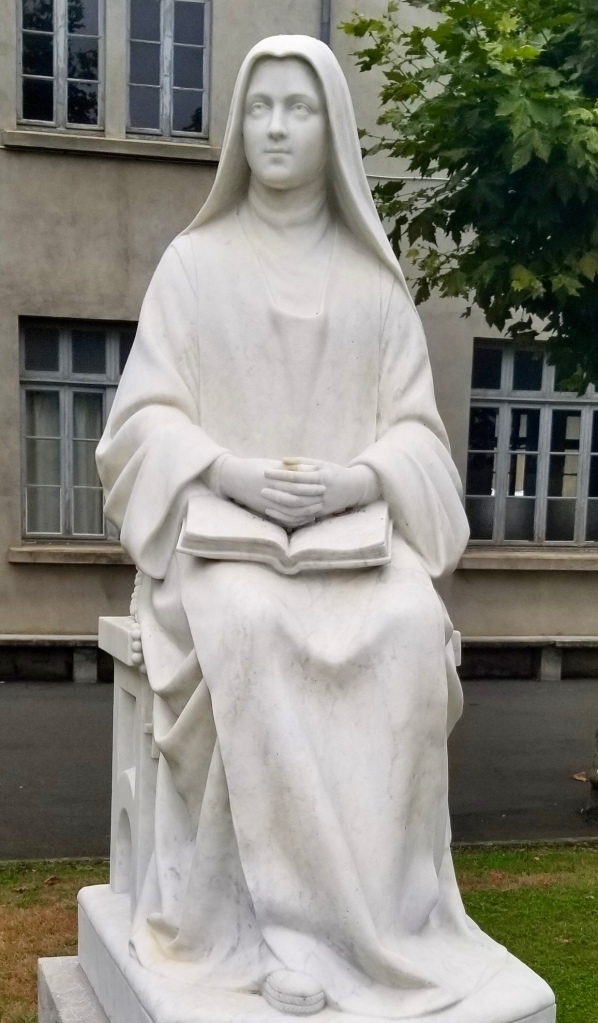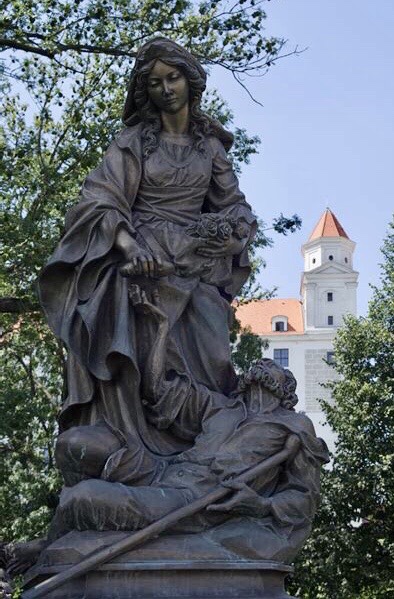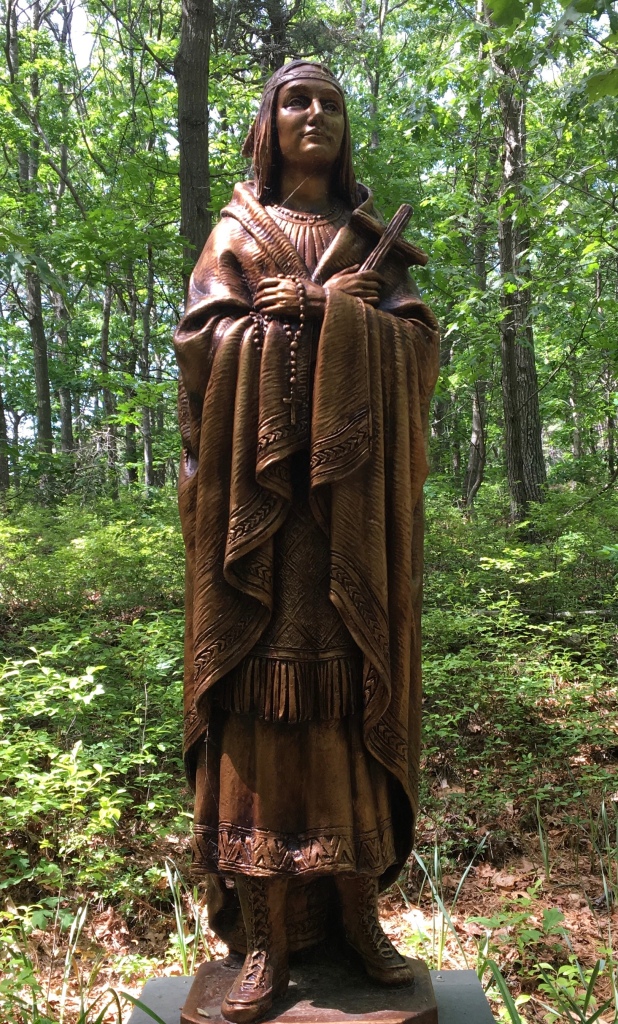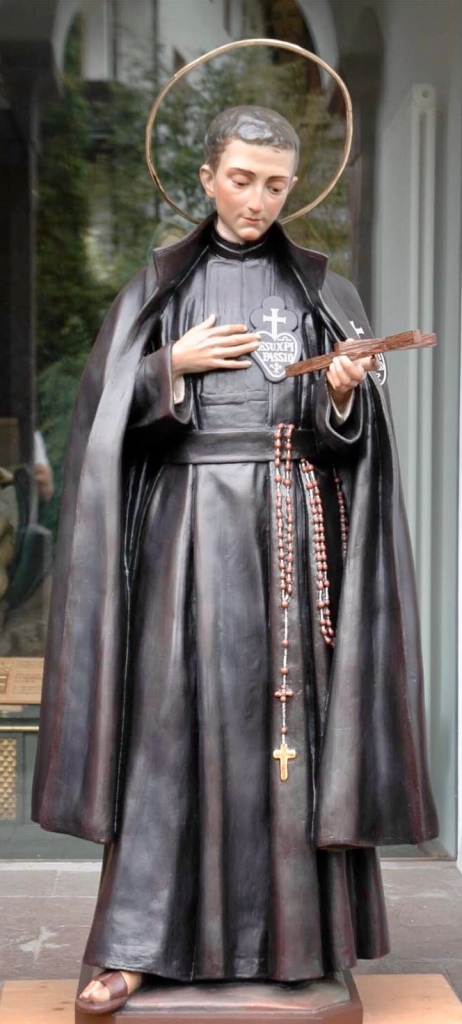I heard a woman talk about a group of Saints known as the 24-Year-Old Saints because each person died at, or close to, age 24.
Leading up to her 24th birthday, this woman asked to receive a gift in her 24th year through their intercession.
That year she did receive a gift…
She met the man who would become her husband!
Since it’s the year 2024, she encouraged people to pray to these Saints and ask for gifts.
I liked the idea and began invoking them in January.
I also prayed a novena from April 16th to 24th using a prayer shared by that woman.
During the novena, I promised to dedicate a blog post in their honor.
This Saint Spotlight is dedicated to: The 24-Year-Old Saints.
Below is a list of these holy people.
The list includes:
- A short biography
- Vocation/state in life
- Date and cause of death
- Interesting fact
- How the Saint is pictured in art
- Patronage
- Feast Day
I’ll share the prayer I used for the novena at the end.
Bl. Pier Giorgio Frassati

Bio: Pier Giorgio Michelangelo Frassati was born in Turin, Italy on April 6, 1901 to an influential family. He developed a deep spiritual life which he never hesitated to share with his friends. At age 17, he joined the St. Vincent de Paul Society and dedicated much of his spare time to serving the sick and the needy, caring for orphans and assisting the demobilized servicemen returning from WWI. His charity did not simply involve giving something to others, but giving completely of himself. This was fed by daily Holy Communion (which was rare at the time), frequent nocturnal adoration, meditation on St. Paul’s “Hymn of Charity” (1 Corinthians 13), and the writings of St. Catherine of Siena. He studied mining engineering while participating heavily in social and political activism. He enjoyed the theater, opera, museums, art, and music. At his beatification, Pope John Paul II called him the “Man of the Eight Beatitudes”. Frassati hasn’t been declared a Saint yet; he’s a Blessed which means he’s one step away from being canonized.
Vocation/state in life: single layman, member of Third Order of St. Dominic
Date and cause of death: July 4, 1925 from poliomyelitis (polio) which doctors speculated he caught from the sick whom he cared for
Interesting fact: He was very active and adventurous. He wrote the phrase Verso l’alto on a photo of himself mountain climbing right before his death. It’s Latin for “To the heights” or “Toward the top” and has become a popular motto for Catholics. It illustrates the way each Christian is called to live, to strive toward sainthood and eternal life with God.
Pictured: hiking, laughing, smiling, smoking a pipe
Patronage: Catholic Action, Catholic young adults, mountaineers, students, World Youth Day, youth groups
Feast Day: July 4
St. Thérèse of Lisieux

Bio: Marie-Françoise-Thérèse Martin was born in Alençon, France on January 2, 1873 to pious parents (who are also canonized). She was the youngest of nine children, five of whom survived childhood. After her mother died of breast cancer in 1877, Thérèse moved with her family to Lisieux. In the deeply religious atmosphere of her home, her piety developed early and intensively. All four of her elder sisters became nuns. At age 15 she entered the Carmelite convent at Lisieux, having been refused admission a year earlier. She was given the name Thérèse of the Child Jesus. Although she suffered from depression, scruples (a causeless feeling of guilt) and, at the end, religious doubts, she followed the rule perfectly and maintained a smiling, pleasant and unselfish manner. Before her death, she acknowledged that, because of her difficult nature, not one day had ever passed without a struggle. The story of her spiritual development was related in a collection of her epistolary essays, written by order of the prioresses and published in 1898 under the title Histoire d’une âme (“Story of a Soul”). Her popularity is largely a result of this work, which conveys her loving pursuit of holiness in ordinary life. She defined her doctrine of the Little Way as “the way of spiritual childhood, the way of trust and absolute surrender.”
Vocation/state in life: Discalced Carmelite nun
Date and cause of death: September 30, 1897 from tuberculosis
Interesting fact: She is one of the four female Doctors of the Church and the youngest of all the Doctors.
Pictured: wearing the Discalced Carmelite Habit, often holding a book, crucifix and/or roses
Patronage: florists, gardeners, missionaries, pilots, those with tuberculosis
Feast Day: October 1
St. Elizabeth of Hungary

Bio: Elizabeth of Hungary, also known as Elisabeth of Thuringia, was born in 1207 in Pressburg, Hungary (now Bratislava, Slovakia). She was a princess of the Kingdom of Hungary and Thuringia. As the daughter of King Andrew II of Hungary, she was betrothed in infancy to Louis IV, son of Hermann I of Thuringia, at whose court she was brought up. The marriage, which occurred when Louis succeeded his father in 1221, proved to be ideal but brief. Louis died in 1227 of plague at Otranto, Italy, en route to the Sixth Crusade. When his brother Henry assumed the regency, Elizabeth left and took refuge with her uncle, Bishop Eckbert of Bamberg. No longer caring for position or wealth, she joined the Third Order of St. Francis, a lay Franciscan group. At Marburg she built a hospice for the poor and sick, to whose service she devoted the rest of her life. After her husband’s death, she took solemn vows similar to a nun (including celibacy) and refused to remarry. She put herself under the spiritual direction of Konrad von Marburg, an ascetic of incredible harshness and severity, who belonged to no specific order. One such act was ordering Elizabeth to send away her three children. She was declared a Saint in 1235, only four years after her death.
Vocation/state in life: widow, mother, member of Third Order of St. Francis
Date and cause of death: November 17, 1231 from poor health probably due to her practices of severe penance and mortification
Interesting fact: The most popular legend about St. Elizabeth is the one often depicted in art. It shows her meeting her husband unexpectedly on one of her charitable errands, where the loaves of bread she was carrying were miraculously changed into roses. This transformation convinced him of the worthiness of her kind acts, which he had been scolding her for.
Pictured: with a crown, bread, food basket, roses
Patronage: bakers, brides, countesses, dying children, exiles, falsely accused people, homeless people, lace-makers, Third Order of St. Francis, widows
Feast Day: November 17
St. Kateri Tekakwitha

Bio: Kateri Tekakwitha was born in 1656 in Ossernenon, New Netherland (now Auriesville, NY, USA). She was the child of a Mohawk father and a Christianized Algonquin mother. At age four she was the only member of her family to survive smallpox, which affected her own health leaving her face scarred and vision impaired. Staying with her anti-Christian uncle, she was deeply impressed at age 11 by the lives and words of three visiting Jesuits, likely the first white Christians she had ever encountered. She began to lead a life inspired by the example of those men, and at age 20 she was instructed in religion and baptized Catherine (rendered Kateri in Mohawk speech) by Jacques de Lamberville, Jesuit missionary to the Iroquois Indians. Harassed, stoned, and threatened with torture in her home village, she fled 200 miles to the Christian Indian mission of St. Francis Xavier at Sault Saint-Louis, near Montreal, Canada. There she came to be known as the “Lily of the Mohawks” in recognition of her kindness, prayer, faith, and heroic suffering. Accounts of Tekakwitha’s life written by de Lamberville and fellow missionaries contributed significantly to the documentation necessary for her beatification.
Vocation/state in life: consecrated virgin
Date and cause of death: April 17, 1680 from poor health probably due to her practices of severe penance and mortification
Interesting fact: On the Feast of the Annunciation in 1679, she made a vow of perpetual virginity; however, her vow was not formally recognized by a bishop.
Pictured: wearing the clothing of her native culture, holding a crucifix, rosary and sometimes a lily
Patronage: ecology, ecologists, the environment, Indigenous people, Protectress of Canada
Feast Day: April 17 Canada, July 14 USA
St. Gabriel of Our Lady of Sorrows

Bio: Francesco Possenti was born in Assisi, Papal States (now Italy) on March 1, 1838. He was baptized in the same font as St. Francis of Assisi. During his early life, Possenti had much in common with the “troubadour” of Assisi and was a popular young man at parties. While attending the Jesuit College at Spoleto, he embraced whatever kind of entertainment he could find. Later Possenti wrote in a letter, “I assure you that, if I had remained in the world, it seems certain to me that I would not have saved my soul. Tell me, could anyone have indulged in more amusements than I?” He especially enjoyed the dancing scene and was nicknamed “the dancer.” His friends also called him il damerino (“the ladies’ man”) for his popularity among women and many romantic involvements. Twice Possenti fell ill and was miraculously cured. Both times he promised God that he would enter religious life and both times quickly forgot about it. Then one day during a procession, he looked up at a banner of Our Lady Help of Christians. He sensed Our Lady was looking right at him and heard the voice, “Keep your promise.” This cut right through Possenti’s heart and he resolved to follow through and enter a religious order. He entered the Passionist Order, against his father’s wishes, on September 21, 1856. He was given the name Gabriel of Our Lady of Sorrows. He lived fully the life of a Passionist and followed the rule perfectly. The community highly regarded him for his sanctity. Gabriel is known for writing, “Our perfection does not consist of doing extraordinary things but of doing the ordinary well.” He died before being ordained to the priesthood.
Vocation/state in life: Passionist clerical student (seminarian)
Date and cause of death: February 27, 1862 from tuberculosis
Interesting fact: Around age 20, Gemma Galgani (now a Saint) got a severe case of meningitis. In 1899 she asked for the intercession of Gabriel of Our Lady of Sorrows, who was a Venerable and not declared a Saint yet. He appeared to her and helped her pray novenas to Blessed (now Saint) Margaret Mary Alacoque and the Sacred Heart of Jesus. She was miraculously cured after the novenas.
Pictured: wearing the Passionist Habit and Sign, holding a crucifix
Patronage: clerics, seminarians, students, youth
Feast Day: February 27
Note: I included several personal intentions while praying the novena
